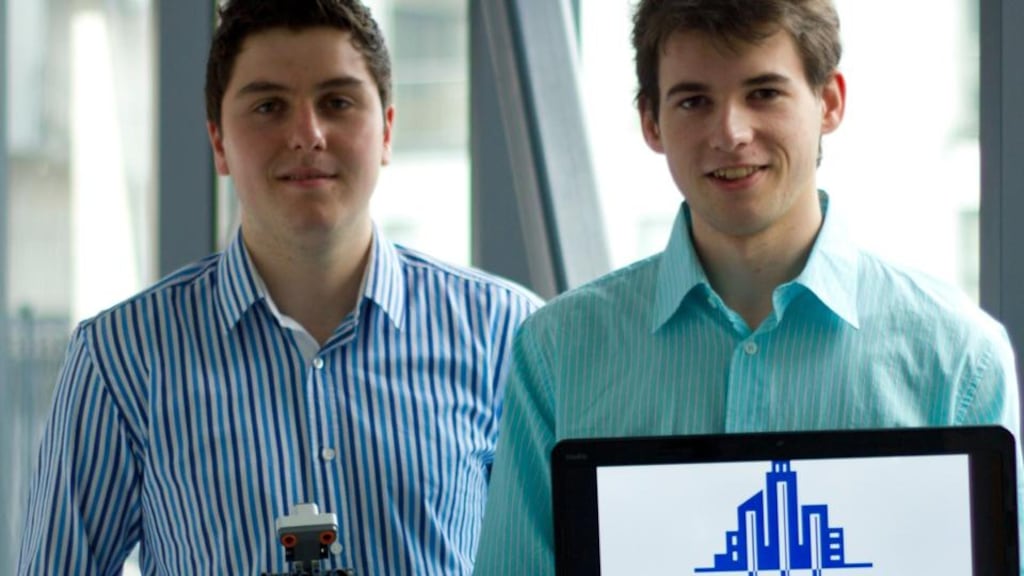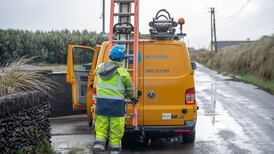You are hungry and tired and in need of dinner. You relay this message via iPad to Herb. He goes to the freezer, takes out a ready meal, microwaves it and then brings it to you.
What's unusual about this situation is that Herb isn't a person. Herb actually stands for Home Exploring Robotic Butler, and was developed out of Carnegie Melon University in the United States.
Like it or not, robots are coming. It’s just a question of how long before they become part of the family.
There are already nearly one million robots in the world today. They are used for assembling products, handling dangerous materials, spray-painting, cleaning sewers, detecting bombs and performing intricate surgery.
This mechanised army is only going to get bigger in years to come, with robots revolutionising life as radically as the internet and social media has done in the last decade. Incidentally, the word robot comes from a 1920s Czech play. The Czech word for servitude, robota, entered the English language as robot and has been with us ever since as a description for an automated machine.
The Czech meaning is only going to get more real in the future, as we’ll all have personal servants. Fortunately, these slaves won’t be humans but machines. They’ll clean our homes, tend to our gardens, harvest our food, manufacture our goods and fight our battles.
Dr Watson, I presume
Your doctor could be a robot in the form of IBM's Watson, surgery might be performed on you using a Da Vinci robot and even your anaesthetist could a robot. Already Johnson & Johnson has developed Sedasys to automate the sedation of adults.
Future battles between technology companies will be fought via robotic proxy, with companies such as Google and Amazon laying the foundations in recent weeks.
Amazon chief executive Jeff Bezos said he wants to deploy an armada of unmanned aerial vehicles or drones to deliver small parcels to customers. He believes Amazon Prime Air could be up and running within four to five years, pending extra safety testing and government approval.
Google recently showed its interests in robotics, snapping up Boston Dynamics in a string of acquisitions led by former Android chief Andy Rubin. Boston Dynamics is the creator of the world's fastest running robot (it can reach speeds of more than 29 miles per hour).
The global phenomenon that is robotics is also taking a foothold in Ireland, with more and more companies specialising in drones and robotics popping up.
One such company is Cork-based SkyTec Ireland, which specialises in unmanned aircraft.
Pilots Steve Slade and Mike Griew founded the company 18 months ago following several years of research in the field of unmanned aircraft. The company uses unmanned aircraft to take high definition images and aerial photographs for use in industrial inspections, roof inspections, advertising and film production.
He says Amazon’s idea of using drones to deliver parcels is flawed.
“There is a lot of wow factor with drones. Drone technology is at first glance very enticing. In reality it can’t cope with difficult weather conditions such as strong winds.
“Batteries are a problem with drones having a limited flying time. Also the drone autopilot relies on GPS to keep the aircraft level. It needs GPS to it knows if it is being blown left or right so it can stabilise itself. The GPS can be out by one or two or three metres though which can be problematic.”
Robots who think for themselves are currently being developed by engineers at NUI Galway and the University of Ulster.
The research group are working to create bio-inspired integrated circuit technology which can mimic the neuron structure and operation of the brain.
Prof Martin Mc Ginnity, director of the Intelligent Systems Research Centre, says modern robots are excellent at executing repetitive pre-programmed tasks, but pretty well hopeless when confronted with unanticipated situations.
“A major objective is to emulate the brain of a very simple creature, namely the C. Elegans worm. By so doing researchers hope to learn more about how biology processes sensory and actuator information. This research can underpin intelligent cognitive robotics, ie robots that learn, adapt, self-organise, reason, communicate, survive, much as humans do,” he said.
Brain-like behaviour
However, he said he would not describe the neural network robot controller as thinking like a human, as research into cognitive systems is currently far behind human thinking.
“For example, getting a robot to learn one skill and exploit that skill in development of another skill is still a very complex task, but is trivial for humans.”
Dr Fearghal Morgan, director of the Bio-Inspired Electronics and Reconfigurable Computing (BIRC) research group at NUI Galway said robotics applications such as the Boston Dynamics Big Dog robot, while impressive, are dedicated and tailored applications which use specific sensors and behaviour control systems.
“The Big Dog robot can move autonomously over complicated terrains, and quickly recover stability if externally interfered with. Machine-based behaviour such as this appears as autonomous brain-like behaviour and may suggest that the robot is learning and thinking for itself. While these robots are extremely effective for bounded applications, they do not exhibit a level of intelligence anywhere near that of the brain,” he said.
Colmac Robotics co-founder and University of Limerick technology student Colmán Munnelly says robotics is currently where computers were when Bill Gates started out.
“This is the dawn of a new era. There will be some form of robot in every household in the next 20 to 30 years.”
Some of these robots might even have been developed by students of Munnelly’s ed-tech start-up.
He founded Colmac Robotics with Niall McCormick to teach children between the ages of eight and 14 about robots.
“We ran six weeks of summer camps this year as well as workshops and the response was overwhelming. We teach kids how to make robots, programme them and build in light sensors, touch sensors and ultrasonic sensors.”
McCormick says children learn several different skills including computer aided design, electronic and mechanical engineering, physics and computer science.
Cultural context
"Bill Gates said that robotics is the future, we want Ireland to be a part of that future."
MIT economist and co-author of the book Race Against the Machine Andrew McAfee says robots will ultimately replace humans in a number of jobs, dramatically changing the economy. However, he says robots are not going to run companies or hold department meetings, and thus are unlikely to become your boss anytime soon. However, they could replace people in certain roles.
But there is a flipside.
“In this world, everything would be a lot cheaper because labour costs would drop to zero. And people would be freed up to do things other than work. We could use our time to explore, create, perform, craft, mingle, and so on because we wouldn’t have to work to produce the necessities or luxuries of life; the robots would be taking care of that,” McAfee says.
But change to working culture as a result of technology is nothing new. Intel's director of user experience research Genevieve Bell says technology has been influencing culture and vice versa for years. She says technologies develop in a particular cultural context as a result of changing needs. Once developed, the technology then changes the culture that gave birth to it.
For example, mobile phone manufacturers have developed popular phones for Muslim users that support their religious practices by reminding them when it is time to pray, orienting them towards Mecca and disabling incoming calls for 20 minutes.
Sociable robots
While technology and robots come with many benefits, there are problems. One is that people start to expect less from each other as they expect more from technology. People hide by sending messages electronically rather than discussing difficult issues in person. This in turn is leading to sociable robots, as they give the illusion of companionship without the demands of friendship.
One thing is certain, robots are about to become more commonplace. In many ways, they are already everywhere but we’ve trained ourselves not to notice.
In 1920, a modern dishwasher would have been a miracle in technology terms, as exotic as some of the futuristic technology portrayed in Minority Report or new Spike Jonze release Her. It's a machine that cleans our dishes, so in a way could be seen as a robot.
The same goes for modern airliners. A Boeing 777 essentially flies itself from one airport to another but we don’t call it a robot.
The future may be about robots, but will we even notice?
War games: Robots battle it out in everything from sailing to soccer to fire fighting and flying
Major technology companies such as Google and Amazon aren't the only ones competing in the robot wars.
Robot challenges and competitions have soared in popularity in recent years, with robots battling it out in everything from sailing to soccer to fire fighting and flying.
Ireland will also be playing its own part in these competitions, with the World Robotic Sailing Championships taking place in Co Galway next September.
The championships are a spinoff competition from the Microtransat Challenge, a transatlantic race for autonomous sailing robots.
The event is being organised by NUIG in conjunction with Hewlett Packard, and an international robotic sailing conference will be held alongside it in the city.
The conference aims to provide researchers working on problems related to autonomous sailing the chance to exchange ideas.
Incidentally, there is big money to be made in robot competitions, with the prize for the DARPA Robotics Challenge totalling $2 million.
Run by the US Defence Advanced Research Projects Agency (Darpa), the challenge will focus on disaster or emergency- response scenarios.
Trials for the competition are taking place this Christmas with the robots being put through their paces on eight tasks.
Among other things, the robots will have to climb a ladder, driving a utility vehicle along a pylon-lined course, remove debris blocking a doorway and cut a triangular shape in a wall using a cordless drill.












